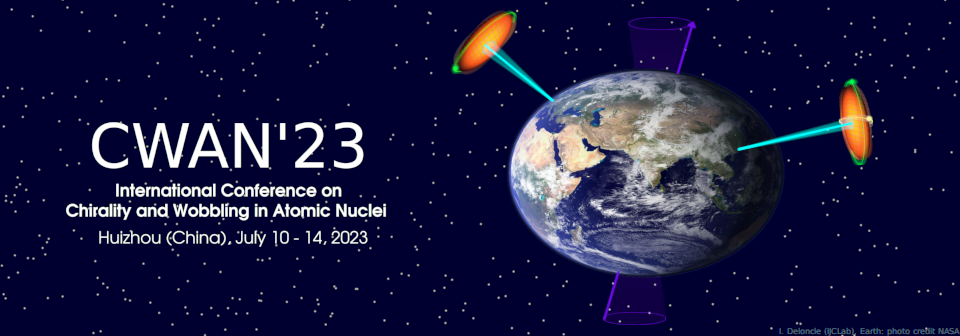Orateur
Description
Chirality is a subject of general interest in natural science. Nuclear chirality was first predicted in 1997, and up to now 62 candidate chiral doublet bands in 49 nuclei have been reported. Based on the covariant density functional theory, a phenomenon named multiple chiral doublets (MχD), i.e., more than one pair of chiral doublet bands in one single nucleus, was predicted in 2006, which has attracted extensive attentions. In 2016, the MχD with octupole correlations were reported in $^{78}$Br. This observation indicates that nuclear chirality can be robust against the octupole correlations, which encourages the exploration of the simultaneous chiral and reflection symmetry breaking in a reflection-asymmetric triaxial nucleus.
In this talk, I will briefly introduce the developed reflection-asymmetric triaxial particle rotor model (RAT-PRM). This model is applied to investigate the nuclear Chirality-Parity (ChP) violation, a simultaneous breaking of chiral and reflection symmetries in the intrinsic frame. A new symmetry for an ideal ChP violation system is found and the corresponding selection rules of the electromagnetic transitions are derived. The fingerprints for the ChP violation including the nearly degenerate quartet bands and the selection rules of the electromagnetic transitions are provided. These fingerprints are examined for ChP quartet bands by taking a two-j shell $h_{11/2}$ and $d_{5/2}$ with typical energy spacing for A = 130 nuclei.

